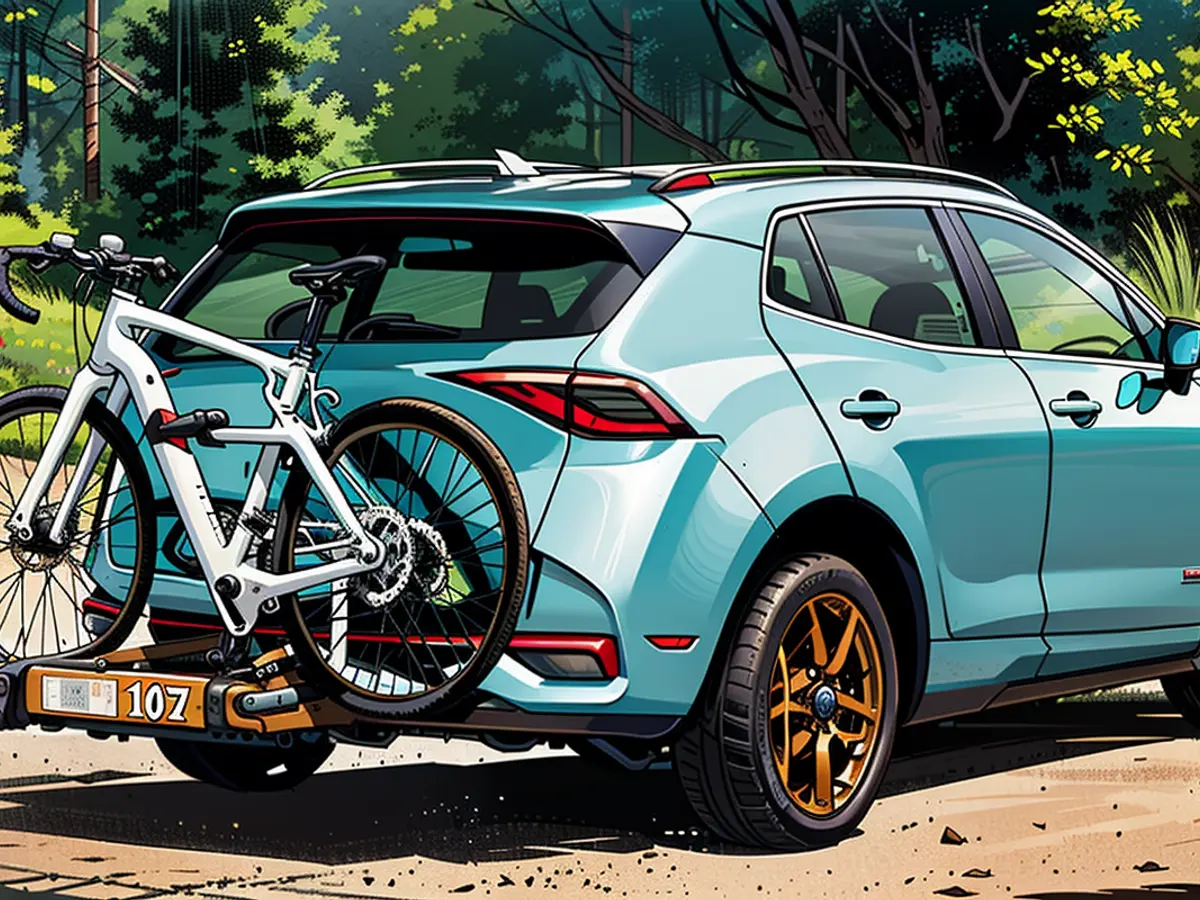Safe travel with electronic bikes in cars: helpful guidelines
It's not too difficult to transport motorbikes using a bike rack on your car. But for e-bikes, it gets a bit more complicated. Weight and size play a significant role in this process. So, what should we consider? And why do experts recommend against roof transportation?
Many Germans have switched from traditional bikes to e-bikes, also known as Pedelecs. People often take their electric assist bikes with them on holiday. These bikes have built-in wind resistance, making long tours more enjoyable. And with the help of an e-bike, even seniors can cover longer distances despite their limited fitness.
Bike Rack at the Towing Hitch
Transporting by car is not always easy. This is mainly due to the relatively high weight of monowheel e-bikes. These bikes carry the battery and motor, along with the heavy frame, which can add several extra kilograms. If two Pedelecs are placed on some bike racks, they can easily exceed the load capacity of many towing hitch mounts, which is typically between 50 and 100 kilograms. It's important to note that the weight of the carrier itself should also be considered alongside the weight of the bikes. In some cases, it may be necessary to purchase a new carrier specifically designed for transporting e-bikes.
Rack on the Trunk Lid
If people prefer to transport their bikes on the trunk lid, but don't have a towing hitch, mounting a rack might be an option. However, not all cars support this method. Before buying, it's crucial to read the manufacturer's instructions. Rough handling can damage the paintwork. Other drawbacks include increased wind noises and difficulty accessing the trunk.
Transport on the Roof
Alternatively, transport on the roof is possible, but weight should be considered. Roof transport systems can handle up to 75 kilograms, including the transport system itself. The AZT (Allianz Center for Technology) advises against the roof transport of Pedelecs due to their high weight. A 2015 crash test with e-bikes on a roof rack demonstrated that the e-bikes came loose from the mounting upon impact, potentially leading to damage or injury.
Roof transport may also lead to higher fuel consumption. If a battery falls out during transport or gets damaged, it can become a safety hazard, especially for Lithium-ion batteries which carry an increased risk of fire. So, if you find roof transportation too risky, you might want to consider using a bike rack designed for lying transport. These roof transport options also offer aerodynamic advantages.
Protecting Electronic Components from Water
When transporting Pedelecs, it's advised to remove both the battery and the on-board computer display, and transport them safely in the car's interior. The exposed connectors on the e-bike should be protected from dirt and moisture. A piece of plastic film can be used, but make sure it remains secure against the wind.
Bosch, the Pedelec drive specialist, recommends protecting the motor unit from external influences during e-bike transport. For example, while riding in the rain, a lot of water can be splashed onto the drive unit by the air swirls behind the vehicle. Special waterproof transport boxes are available for this purpose.
If the display and battery are removed for transport, it also boosts theft protection. In general, the bicycle itself should be secured with a lock to prevent theft attempts other than the bike carrier itself.
Transport in the Trunk or Cargo Area
When storing bicycles in the trunk, these restrictions don't apply. Vans, combis, and SUVs are popular options for transporting bicycles in the cargo area. This usually requires removing the front wheel. Special mounting systems are available for securing up to three wheels next to each other. The advantage is that the loading effort remains low, and the aerodynamics of your vehicle are not affected. In addition, the wheels are protected from wind, weather, and theft.
However, the rear seats often need to be folded down, making them unusable for passengers. Cargo space is also limited. This solution is particularly interesting for singles or couples. Folding bikes, which are now available more frequently with electric drive, are even better suited for transport in a car.
Read also:
- Some people choose to take their e-bikes on vacation, making long bike tours more enjoyable due to the built-in wind resistance and assistance from the electric motor, even for seniors with limited fitness.
- While traditional bike racks can easily transport automobiles, e-bikes can be more complicated due to their weight and size, often exceeding the load capacity of many towing hitch mounts.
- Experts recommend against roof transportation of e-bikes due to their high weight, as demonstrated by a crash test in 2015, where the e-bikes came loose upon impact, potentially leading to damage or injury.
- As an alternative, an advisor can help you find a suitable bike rack specifically designed for e-bikes, offering a safer and more secure transportation method for your electronically-assisted bike.








